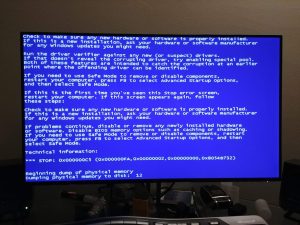 Last week, Alex Luyckx gave us a post called “Don’t Drink the Rodinal (Part 1)” in which he covered various black and white developers with a bit of history, tips, and sample images. For as good as that post was, he didn’t actually cover Rodinal, or my favorite B&W developer, HC-110.
Last week, Alex Luyckx gave us a post called “Don’t Drink the Rodinal (Part 1)” in which he covered various black and white developers with a bit of history, tips, and sample images. For as good as that post was, he didn’t actually cover Rodinal, or my favorite B&W developer, HC-110.
So I was a bit ecstatic this morning when I saw that Part 2 had been posted in which both of those grievous offenses have been righted, along with a third developer called Pyrocat-HD.
As with Part 1, there is a 36 minute podcast attached to this one where he greatly expands more on what’s discussed in the article, but of course, this wouldn’t be a blog post without some pictures, and as usual, they’re up to Alex’s typically high standards.
Both parts 1 and 2 are quite well done, but my only complaint is I have no choice but to try something else than HC-110 now! 🙂
Here are more great posts from some of my favorite sites:
One of my early favorite Japanese rangefinders was the Konica Auto S2, but in a somewhat confusing twist, Konica had another camera similarly called the Konica S II. Take out the “Auto” and turn to Roman numerals and you have this selenium cell mechanical wonder from 1961. It is the S II, and not the Auto S2 that Peggy Marsh takes a look at this week. Found in the junk bin of a Japanese camera store for the equivalent of 10 bucks, Peggy shoots a roll of Fuji Acros 100 and shares her thoughts (and images).
Since 2015, Alan Duncan has been doing something called the “Poundland Challenge” for a while, which is an unofficial contest to see what kinds of results can be had with a camera bought for “a quid or less”. The rules state that the camera can be bought online, but if shipping is included, it cant exceed 10 quids (as an American, is that the right way of saying it?) Anyway, the latest entry into the challenge is the all plastic Minolta F25. With a very low build quality, reminiscent of Chinese made knock-off cameras, the F25 sports a plastic unknown focal length f/6.3 lens, an in-body flash, a date back, and not much else. Is this a camera worthy of it’s meager cost, or has this challenge been a failure?
In another of Jim Grey’s ongoing project of updating his older reviews, he revisits the Kodak Pony 135 Model C, which is a camera I’ve recently shot myself. These mid 50s Kodak cameras don’t often do themselves justice with their simple shutters, unexciting gray plastic bodies, and silkscreened artwork, but once you actually shoot some film through them, you find out that they’re quite capable cameras. I’m sure Jim would agree…but if you’re looking for my thoughts, you are going to have to keep waiting.
Yashica made some pretty great TLRs over the years, and one of the more popular ones today is the Yashica-Mat 124G. It was the last model produced and had modern conveniences like a CdS meter, and well, I guess that’s it, but people really seem to like it. But for those who love shooting this camera, did you know that there were some auxiliary lenses available for it? This week Aivaras from 35mmc gives us their take on what this camera is capable of at wide angle and telephoto.
One of my favorite posts this week is actually a reprint of something that previously appeared on PetaPixel, but is still very much worth a read. Its an article by Simon King on EMULSIVE called “How to Get Over Early Hurdles in Film Photography”. It’s a spot on piece that touches upon things that I very much agree with such as “successful film photographs do not just represent that image but the entire film journey that we have gone on to achieve it.” and whether you should edit your film photos digitally after scanning them or leave them as it. Perhaps what I like best about this article, is it doesn’t really attempt to give any answers, more like give you the questions to ask yourself to help you come to your own conclusions.
When I first saw this week’s post from Casual Photophile called “Mastering the Zone Metering System” pop up in my feed, I had a feeling of “meh” come over me as I thought an article about zone focusing wouldn’t be that interesting. Then I realized, it wasn’t zone focusing, but zone metering! What the hell was that, I asked myself? Then I read the article, and frankly, I’m more confused than I was before. It’s not that the article is poorly written, quite the opposite. Cory Miller does a great job of tackling a complex subject, but it’s not something I think I’ll ever use. The Outdoor Eight rule isn’t perfect, but boy is it easy! Of course what works for me might not for you, so check out the article and see if Zone Metering is something you’d like to try.
Johnny Martyr continues to be my hero. Where most guys like me are happy to walk around a local nature trail or shoot some pics of their kids with classic cameras, Johnny is shooting weddings and behind the scenes production photos…on film! What kind of film camera does he use you might ask? Well since he’s doing this professionally, the safe thing to assume would be a Nikon F6 or perhaps even a Hasselblad of some type. But no, he’s shooting AGFA Optimo Parats, and Kodak Retinas! Hero, indeed!
This week 35hunter gives us a post called “Just Because You’re A Photographer, It Doesn’t Mean You Should Have A Photography Blog”, and as a blogger myself I found it rather interesting. Now, disclaimer time, although I shoot photos with cameras, I do not consider myself a photographer. I don’t do anything professionally, and consider myself to be more of a camera fan, but I can see how there is a link between people who do consider themselves photographers and the need to write about it online. I thought it was a well written post and comes back to the same advice that generally works for everything…do what works for you.
Whenever someone pits two competitors against one another, there seems to be a trend for increased excitement the bigger the competitors. The larger, more muscular fighters draw the biggest purses, the fastest nitro powered drag cars are spectacles each time they run down a drag strip, and anytime a big celebrity gets into a beef with another it always seems to make headlines. So when two heavy weight cameras are pitted against one another, people take notice. In this case, Alex Luyckx chose the Nikon F5 and Minolta Maxxum 9 and performed his usual high standard of blog writing comparing the two.

Considering guys like me regularly shoot cameras 50, 60, 70 years, or even older on a regular basis and are able to achieve pretty decent results, you might think that using a piece of technology from 20 years ago would be a snap. When it comes to old film scanners, that is NOT true. I’m not gonna lie, I couldn’t even make it through this whole article by EM of EMULSIVE without dredging up nightmares from that one time I tried to get a Nikon Coolscan 2000 working on an old Windows XP machine. I saw my first ‘Blue Screen of Death’ in years while working on that and I haven’t been the same since!
2019 has been a slow year for great metal, and I’m saddened by the lack of albums that I’ve really been able to pump my fist to. So it seems fitting in a “meh” year to get excited over the latest Bloodred Hourglass album, Godsend. Of course, Godsend isn’t a bad album, otherwise I wouldn’t be writing about it. In fact, it kicks all sorts of ass, and has repeatedly been on maximum volume in the Subaru this week. It’s a safe, and predictable album, but that’s OK. Not everything has be an 11. Sometimes straight forward thrash/melodeath from Finland is all you need, and Bloodred Hourglass delivers!



Mike, we Brits always refer to “quid” singular, meaning £1, and even when we’re talking about more than one. So, “Ten quid ” is correct in colloquial slang. The £ is also referred to as a “nikker” pronounced “nikka” for singular and plural denominations.
However, we also use “quids in (pocket)” which refers to an undefined monetary saving e.g. I could be quids in doing it myself rather than pay someone else (to do it).
Cannot seem to access Part One of Luyckx’s film developer series. Did he happen to include Acufine in that article?
Here is the URL: http://www.alexluyckx.com/blog/index.php/2019/06/14/classic-camera-revival-episode-57-dont-drink-the-rodinal-part-one/
I was wrong in this roundup as it was posted 2 weeks earlier, not the previous week.